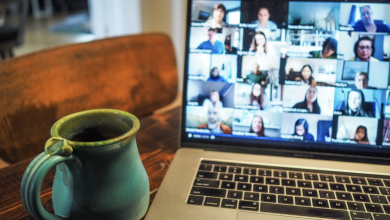Race, Poverty, Justice, and Access to Health

Photo by torange via CreativeCommons
Imagine one day you reach the point in life where battling against your disease is a constant struggle. There is a new drug that can stop this struggle once for all, but the price is a thousand dollars per pill. Would you be able to buy it? If not, how would you choose between your housing, food, and your health?
This is the decision many people have to make in today’s world, where one-third of the world does not have access to essential medicines. Biomedical research is failing people in ways that the pricing of drugs, such as insulin and hepatitis C drugs, continues to swell to hundreds of thousands of dollars without justification. Little money goes into studies of Ebola, or Zika — tropical diseases that mainly affect people in poverty and people of color— only ever receiving enough attention once those in positions of privilege start to fear that they might also get infected.
Attempting to address this issue, Universities Allied for Essential Medicines (UAEM), the AIDS Healthcare Foundation, and the UCLA School of Law Epstein Program in Public Interest, Law, Policy, and Critical Race Studies Program hosted a panel titled “Race, Poverty, Justice and Access to Health.” The panelist included Adam Foss, founder and president of Prosecutor Impact; Liza Brereton, counsel at AIDS Healthcare Foundation and HIV litigation attorney; and Dr. Reshma Ramachandran, Family Medicine Resident at Kaiser Permanente Los Angeles Medical Center and activist; with Merith Basey, executive director of UAEM and advocate for international access to medicines, as moderator.
The event opened with a video clip of a man proposing to a woman with a ring she seems to treasure for life. The camera then turns to reveal the true beauty of the ring where it is revealed to the audience that a capsule is lying inside the ring box. The video acts as a metaphor because the lofty prices of drugs are getting closer and closer to the value of a diamond.
Americans spend on average $1,200 per person per year on prescription drugs. Drugs such as Sovaldi and Harvoni (used to treat hepatitis C) charge over $1,000 per pill. Both figures signal that money is the deciding gatekeeper for who gets to live or die. According to Ms. Basey, medicine shouldn’t become a luxury. Then there is clearly something wrong with the system, since we are witnessing a world where prices of drugs are more formidable than the disease itself.
Why the high price?
The high revenue from drug sale has made the pharmaceutical industry one of the most profitable industries in the U.S. However, Dr. Ramachandran pointed out that although many pharmaceuticals companies claim that they charge medication at high prices for the purpose of funding research, companies in fact don’t do the research themselves. Instead, they acquire studies from universities, most of which are funded by taxpayers. Therefore, patients are charged twice by the pharmaceutical industry: first in the form of tax to support drug development in universities, and second, in the form of the prescription drug cost. In addition, many patients do not expect help from health insurance programs such as Medicaid, because although they are unable to afford drug prices, they make just enough money to disqualify themselves from government subsidies.
Panelist Ms. Brereton went on to reveal the roles patenting play in the global pharmaceutical industry — elevating prices and excluding competitions. Normally, a patent prevents generic companies from producing the drug for 20 years. However, pharmaceutical companies find ways to manipulate the patent system and extent patents of life-or-death medication, such as insulin, to 100 years, thus raising profit by preventing competitors from driving down prices.
According to Ms. Brereton, Gilead Sciences — one of the most profitable Biopharmaceutical companies in the U.S. — developed two versions of a drug that share the same effect, but one (TDF) had more side effects (of causing bone fracture and kidney failure). The safer version is named TAF. The company cunningly raised profit by patenting TDF for sale at the time and studying TAF secretly, while witnessing the side effects of TDF on people. By the time the patent of TDF was about to expire, they then published TAF as a safer, newer drug, and sold it at higher price.
Where did the money go, then, if not into research? Ms. Brereton explained by introducing the fact that the pharmaceutical industry spends over 50 percent of their revenue on lobbying, which in turn allows the industry to block any attempt to regulate pricing through the government. As a result, California Proposition 61, which would have given the state of California some right to regulate drug prices, failed to pass in 2016.
Who is affected?
While the high prices prohibit many from accessing essential drugs, it is people of color, gender minorities, and those with lower incomes who are disproportionately impacted. Ms. Brereton also mentioned that due to the patent system and drug price affect, many developing countries end up using drugs with more side effects because they can’t afford the safer version. The drugs are unevenly distributed in the same way as wealth: according to Ms. Basey, the No. 1 cause of death for Americans under 50 is drug overdose, while people in tropical areas struggle to even gain access to medications. In addition, the patent system often eliminates their access to medication by prohibiting generic companies from producing drugs at lower prices.
People of color are also affected by implicit bias over the course of their treatment. Mr. Foss stressed that the problem for people of color is not only about the cost, but also about the way they are treated in the doctor’s office. It is also important to note that prescriptions are biased in terms of race and gender, where women are 50 percent more likely to receive an opioid prescription, and Hispanics are 50 percent less likely to receive a prescription compared to non-Hispanic white and African-American patients.
Besides drug price, the criminal justice system places another barrier between people and health. According to Ms. Brebreton, 97 percent of patients in prison carrying hepatitis C are not treated. Mr. Foss took a step further to point out that the No.1 cause of death after incarceration is opioid overdose, because prisons only place people’s addictions on hold instead of treating them. Nor does the system provide support programs for people to live independently upon release, which often worsens their conditions. He also condemned the states’ new effort of eliminating drug abuse by criminalizing young people who are selling and spreading drugs, given that 99 percent of the drug dealers are addicts themselves, according to Mr. Foss. Arresting them continues the cycle of locking people up instead of treating the real problem. It is lamentable that people who end up in the criminal justice system are often the same people who do not have access to health care, added Mr. Foss.
According to Dr. Ramachandran, the professional training in pharmacy schools as well as medical schools are subject to the heavy influence of pharmaceutical companies. As a major contributor to research funds and scholarships, those companies play an important role in shaping students’ values, in determining topics of research, and in graduates making their career choices.
Any progress?
Yes — the question received an affirmative response from the panelists. Dr. Ramachandran referred to organizations such as UAEM, and raising awareness of physicians and the general population about the problems within the health system. Mr. Foss noted that we should take a broader view in efforts of addressing those issues—focusing more on what caused the deprivation of access to medication, such as economic, gender, and race inequalities.
Furthermore, it is also crucial to note that change can happen in university campuses. In 2001, Yale University, in collaboration with drug company Bristol-Myers Squibb Co., relaxed their patent on the Yale-invented AIDS drug d4T, allowing generic companies to produce the drug at a cheaper price. As a result, South Africa could legally import generic versions of the drug, and Doctors Without Borders were able to fight the AIDS epidemic in South Africa for the first time. Dr. Ramachandran further called for student action by negotiating with the UC board on March 13 to persuade UCLA to abandon its plan of removing their patent in India to retrieve the patent on a prostate drug developed on campus. This act would block competitions from generic companies in India and render the drug inaccessible for many.
According to C.S. Lewis: “Education without values, as useful as it is, seems rather to make man a more clever devil.” With the stage of development biomedical research has come to today, humans are able to eliminate hepatitis C virus from the planet and return HIV patients to their normal lives given access to consistent, safe medication. This objective is yet to be realized, however, because of the monopoly pharmaceutical companies have over the industry. While patents can encourage incentives for innovation by protecting intellectual properties, they can also be manipulated for a purpose the system was never designed to serve. As we consider remediation for the system, we may also reflect on the factors that turn institutions designed for social welfare, such as the biomedical research and the criminal justice systems, into devils that work against humanity on our road to maximize our well-being.




